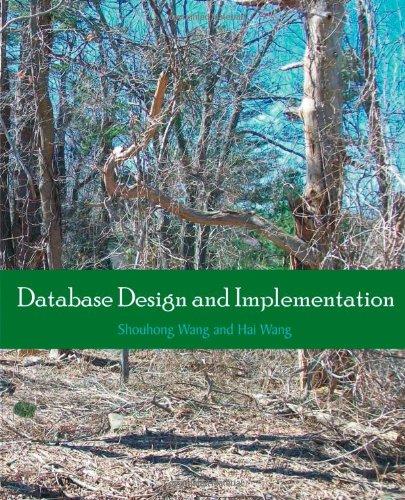JAVA please! Please Give the exact output in the picture.



THE OUTPUT BELOW:



Description Develop a Cache calculator in the Java programming language, which specifies the three different cache mapping of direct, associative, and set-associative. The input of the program is the following: - Main memory in the format A2E, where A and E are the user inputs - Cache blocks as a base-2 value - Bytes in a Cache block as a base-2 value - k-way set associative value where k is a base-2 value (e.g., 2, 4) - Memory address in base-16 The program should do the following: - Calculate and display the Main memory in bytes. - Convert and display the Memory address in base-2. - Direct Mapping Calculate the Tag, Line and Word bit sizes Display the binary Memory address in the Tag, Line and Word bit fields - Associative Mapping Calculate the Tag and Word bit sizes Display the binary Memory address in the Tag and Word bit fields - Set-Associative Mapping Calculate the Tag, Set and Word bit sizes Display the binary Memory address in the Tag, Set and Word bit fields The program should verify the following: - Cache blocks, Bytes and k are a base-2 value. If not, the program should display appropriate message and terminate. - Memory address is a base-16 value. If not, the program should display appropriate message and terminate. - Memory address size is not exceeding Main memory size. If yes, the program should displav appropriate message and terminate. Suppose a byte-addressable main memory contains 1MB and cache consists of 32 blocks, where each block contains 16 bytes, and it is 4-way set associative. Specify how the main memory address 0326A0 maps to in the cache. Main memory The program should display line 1 and accept user input for line 2 (Value A) and 3 (Exponent E) as given below. Main memory representation is A2E Value A: 1 Exponent E:20 Calculate and display the main memory in bytes as given below. Main memory: 1220=1048576 bytes Cache Memory The program should accept the three inputs for cache blocks, bytes and k as given below. Cache blocks: 32 Bytes in Cache blocks: 16 k-set associative value: 4 Memory address The program should accept the memory address in base-16 as given below. Direct Cache Calculate and display the following: Line 2 give the Tag, Line and Word bit sizes and line 3 gives the bit representation from the binary memory address for the three components as given below. Direct Cache mapping of 0326A address [TAG] 11: : [LINE] 5:[ [WORD] 4 [TAG] 00110010011 : [LINE] 01010 : [WORD] 0000 Associative Cache Calculate and display the following: Line 2 give the Tag and Word bit sizes and line 3 gives the bit representation from the binary memory address for the two components as given below. Associative Cache mapping of 0326A0 address [TAG] 16 : [WORD] 4 [TAG] 0011001001101010: [WORD] 0000 Set-Associative Cache Calculate and display the following: Line 2 give the Tag, Set and Word bit sizes and line 3 gives the bit representation from the binary memory address for the three components as given below. The full program can be seen below. Main memory representation is A2E Value A: 1 Exponent E:20 Main memory: 1220=1048576 bytes Cache blocks: 32 Bytes in Cache blocks: 16 k-set associative value: 4 Memory address in Base 16: 0x326A0 Address in binary: 00110010011010100000 Direct Cache mapping of 0326A0 address [TAG] 11 : [LINE] 5 : [WORD] 4 [TAG] 00110010011 : [LINE] 01010 : [WORD] 0000 Associative Cache mapping of 0326AO address [TAG] 16 : [WORD] 4 [TAG] 0011001001101010 : [WORD] 0000 4-way Cache mapping of 0326A0 address [TAG] 13 : [SET] 3 : [WORD] 4 [TAG] 0011001001101 : [SET] 010 : [WORD] 0000 Error checking Cache blocks, Bytes and k should be checked to see if it is a base-2 value. If not, the program should display appropriate message and terminate as shown below. Cache blocks: 3 Cache Blocks is not in Base 2. Program terminated Bytes in Cache blocks: 15 Bytes in Cache blocks is not in Base 2. Program terminated k-set associative value: 3 k-set associative values is not in Base 2. Program terminated Memory address should be checked to see if it is a base- 16 value. If not, the program should display appropriate message and terminate as shown below. Memory address in Base 16: 0x123FG Memory address is not in Base 16. Program terminated Memory address size should not exceed Main memory size. If yes, the program should display appropriate message and terminate as shown below where memory address is 20 bits and memory address is 24 bits. User Input and Output You are required to use the exact input and output wording and formatting as shown in the previous example. Test Cases Please test your software on the following test cases: 1. Main memory : 1220 Cache blocks: 32 Bytes: 16 K : 4 Memory address: 0x326A0 2. Main memory: 2220 Cache blocks: 32 Bytes: 16 N: 4 Memory address: 0x326A0












